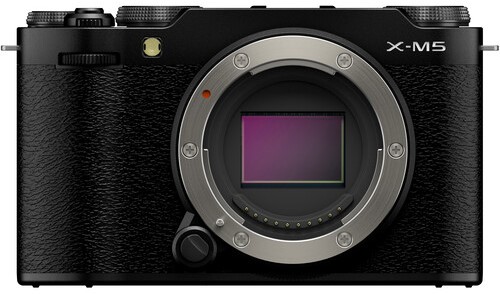Fujifilm has long been admired for building cameras that combine beautiful design with serious photographic power. The Fujifilm X-M5 carries on that legacy and offers a compact, retro-inspired body paired with modern imaging technology. Designed for those ready to move beyond smartphone shooting, it packs impressive still and video capabilities into a body small enough to fit in a jacket pocket.
As the first X-M camera in over a decade, the Fujifilm X-M5 feels like a revival of the approachable mirrorless concept—one that balances performance, portability, and the tactile shooting experience that Fujifilm fans love. Behind its polished silver exterior (or black, if you prefer) lies the same 26.1MP X-Trans 4 CMOS sensor found in the popular X100V, backed by the X-Processor 5 for faster performance and enhanced color rendering.
Whether you’re capturing cinematic 6K footage, crafting nostalgic JPEGs with film simulations, or documenting everyday adventures, the Fujifilm X-M5 delivers a creative toolkit that feels both familiar and refreshingly modern. Let’s take a closer look at what makes this compact camera such an exciting addition to Fujifilm’s lineup.
Table of Contents
- Fujifilm X-M5 Design and Build Quality
- Sensor and Image Quality
- Autofocus and Performance
- Fujifilm X-M5 Video Capabilities
- Film Simulations and Color Science
- Connectivity and Battery Life
- Real-World Use
- Comparison: Fujifilm X-M5 vs. Other Fujifilm Cameras
- Price, Value, and Who It’s For
- Frequently Asked Questions
Fujifilm X-M5 Design and Build Quality
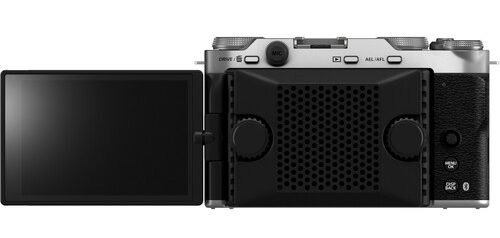
The Fujifilm X-M5 continues Fujifilm’s tradition of merging modern performance with a nostalgic aesthetic. Its silver, rangefinder-style body weighs only 12.5 ounces and measures just 4.4 inches wide—making it the smallest and lightest X-series model to date. Despite its compact form, it feels well-balanced and robust, thanks to a metal chassis and thoughtfully positioned dials that encourage manual control.
The camera’s top plate features classic Fujifilm styling, complete with dedicated dials for mode selection and film simulation access. These tactile controls contribute to an analog-inspired shooting experience, one that photographers appreciate for its simplicity and precision. It’s easy to adjust exposure or color profiles without diving into menus—a hallmark of Fujifilm’s design philosophy.
Modern usability improvements are also clear. The ports have been moved to the right side to prevent cables from interfering with the LCD when shooting video, and the microphone jack is now at the rear for better compatibility with accessories. The fully articulating 3-inch touchscreen allows flexible framing, whether you’re vlogging, shooting at waist level, or composing vertically for social media content.
In short, the Fujifilm X-M5 achieves a rare balance: it feels nostalgic yet contemporary, solid yet lightweight, and intuitive without sacrificing control. It’s a great option for beginner photographers, enthusiasts, and pros alike.
Sensor and Image Quality
As the Fuji Guys Channel discusses in the video above, at the heart of the Fujifilm X-M5 lies a 26.1-megapixel APS-C X-Trans 4 CMOS sensor—an imaging engine that has proven its capability in cameras like the X100V. Paired with the X-Processor 5, this combination produces detailed, vibrant images with impressive dynamic range and low-light performance. The sensor’s unique color filter array reduces moiré and false color, enabling images that look organic and filmic straight out of the camera.
Compared to a smartphone sensor, which is more than 16 times smaller, the X-M5’s APS-C sensor allows greater light capture and depth control. This means better separation between subject and background and more flexibility in creative exposure settings. Skin tones are rendered naturally, while landscapes and urban scenes retain fine detail even at higher ISO values.
Another advantage of the X-Trans design is its random pixel pattern, which mimics the texture of traditional film. The result is smoother tonal gradation and less reliance on heavy post-processing. For photographers who value color accuracy and subtlety, the Fujifilm X-M5 is a capable tool that encourages getting it right in-camera rather than spending hours in software.
Whether shooting RAW or JPEG, the files exhibit rich colors and excellent sharpness. Combined with Fujifilm’s broad lens ecosystem, the sensor brings out the full potential of every X-mount optic—from the compact XF 27mm f/2.8 to the versatile XF 18–55mm f/2.8–4.
Autofocus and Performance
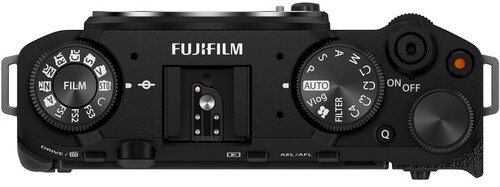
Autofocus performance is a major leap forward for the Fujifilm X-M5. Borrowing from the company’s more advanced models, it integrates AI-driven subject detection that recognizes humans, animals, vehicles, and other moving subjects with remarkable precision. The 425-point hybrid autofocus system combines phase and contrast detection for reliable focus acquisition across the frame.
In practical use, the camera locks onto subjects swiftly, even in challenging lighting. Eye detection works effectively for both stills and video, keeping focus steady as subjects move within the frame. For street photographers or vloggers, that means fewer missed moments and smoother shooting experiences.
The X-M5’s burst shooting capabilities also impress. It can fire at up to 30 frames per second using the electronic shutter and 8 fps mechanically—ideal for fast action or fleeting candid moments. The camera’s buffer is sufficient for extended bursts without significant slowdown, a testament to the processing power of the X-Processor 5.
Despite its compact body, the Fujifilm X-M5 handles like a much larger system camera, offering reliable speed and responsiveness for both enthusiasts and advanced users alike.
Fujifilm X-M5 Video Capabilities
Fujifilm has clearly designed the Fujifilm X-M5 with modern creators in mind. As discussed in the video above by Josh Sattin, the camera records open-gate 6.2K video at up to 29.97 fps, utilizing the full 3:2 sensor area for maximum detail. For those producing cinematic content, the additional resolution allows for flexible cropping and stabilization in post.
The system’s audio capabilities are equally robust. Three built-in microphones capture clear, dimensional sound, and users can select between four pickup patterns—Surround, Front Priority, Back Priority, and Front & Back Priority—depending on the scene. There’s also a 3.5mm input for external mics, as well as in-camera voice enhancement and noise reduction features.
Self-tape features like Background Defocus, Product Priority, and Portrait Enhancer make the X-M5 particularly appealing for content creators and vloggers. The camera even includes a 9:16 Short Movie mode that records vertical clips ready for social platforms. When recording, a red outline appears around the LCD, ensuring creators know they’re live on camera.
With two Log modes—F-Log and F-Log2—for flexible color grading and support for 4:2:2 10-bit output via HDMI, the Fujifilm X-M5 offers remarkable video versatility for its class. It’s a camera capable of bridging the gap between casual creators and serious filmmakers.
Film Simulations and Color Science
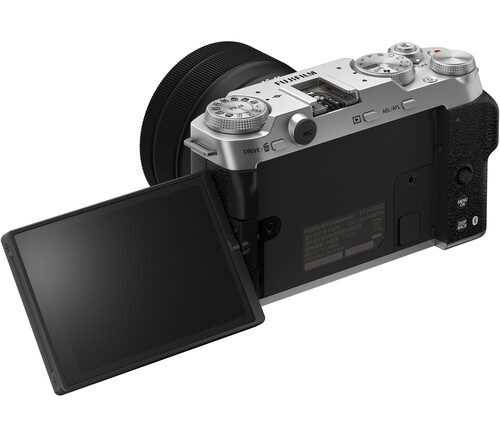
Fujifilm’s color science has always been one of its strongest assets, and the Fujifilm X-M5 continues that tradition with 20 built-in Film Simulation modes. These presets emulate the look of Fujifilm’s classic emulsions such as Velvia, Classic Chrome, Provia, and Nostalgic Neg. Each mode produces a distinct aesthetic, allowing photographers to achieve signature looks straight out of the camera.
For creators who prefer minimal post-processing, these film simulations simplify the workflow dramatically. With the ability to assign eight of them directly to a top dial, switching between creative styles becomes second nature. The result is a streamlined, intuitive shooting experience that aligns with Fujifilm’s philosophy of “color in-camera.”
Beyond these profiles, additional effects like Grain Effect and Color Chrome deepen the analog feel. Grain Effect adds subtle texture to mimic vintage film, while Color Chrome enhances saturation and tonal depth in rich color areas. These tools make the Fujifilm X-M5 a delight for photographers seeking images that feel personal, artistic, and ready to share.
Connectivity and Battery Life
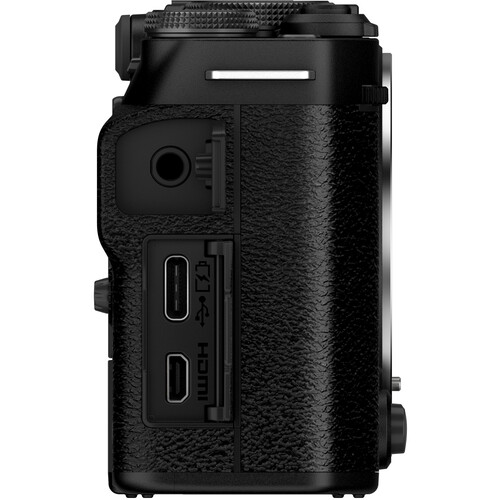
Modern creators expect seamless integration between camera and workflow, and the Fujifilm X-M5 delivers. With built-in Wi-Fi and Bluetooth 5.2, the camera connects easily to the Fujifilm XApp, enabling remote shooting, firmware updates, and instant image transfer to mobile devices. For professionals, Frame.io Camera to Cloud integration allows direct upload of files to the cloud seconds after capture—ideal for collaborative projects.
The single SD card slot supports UHS-I cards, which may feel limiting to some advanced users, but it’s consistent with the X-M5’s compact nature. Battery life is solid, offering up to approximately 440 shots per charge in Economy mode or around 45 minutes of continuous 6K video. Charging via USB-C adds convenience, especially during travel or long shoot days.
These modern touches make the Fujifilm X-M5 more than just a camera—it’s a connected creative hub built for photographers and filmmakers who value both performance and workflow efficiency.
Real-World Use
As Brandon Y Lee notes in the video above, day-to-day shooting, the Fujifilm X-M5 proves to be an ideal companion for travel, street, and lifestyle photography. Its small size encourages spontaneity, and its quick-start behavior ensures that it’s ready when inspiration strikes. The combination of manual controls and intelligent automation means it adapts easily to both beginners and experienced shooters.
The articulating screen and reliable autofocus make it excellent for solo creators producing vlogs, tutorials, or live commentary. Paired with compact prime lenses, the system feels nimble yet capable of professional-grade output. Fujifilm’s JPEG engine continues to impress, delivering images that often need no editing.
Even in challenging light, the sensor and processor duo hold their own. Noise levels remain low at higher ISOs, and colors retain depth and richness. Whether photographing quiet landscapes or bustling city streets, the Fujifilm X-M5 offers creative flexibility without the burden of bulk.
Comparison: Fujifilm X-M5 vs. Other Fujifilm Cameras
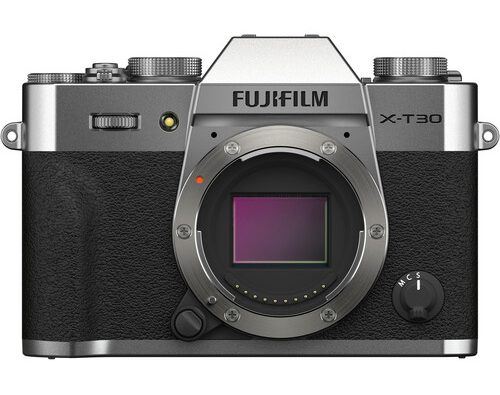
Fujifilm X-T30 II
Within Fujifilm’s lineup, the Fujifilm X-M5 sits between the entry-level X-T30 II and the more advanced X-S20. It inherits many of the same imaging features as those models but distinguishes itself with its emphasis on portability and creator-focused tools. Compared to the X-S20, it’s smaller and lighter, trading deep grip ergonomics for a sleeker form factor better suited to travel and handheld video.
While it lacks in-body image stabilization (IBIS), the X-M5 compensates with excellent digital stabilization for video and strong high-ISO performance for stills. For those who prefer manual operation, its dials and interface will feel instantly familiar, while newcomers will appreciate the accessible menu layout.
In short, the Fujifilm X-M5 combines much of Fujifilm’s best tech in a form that feels refreshingly simple. It’s an ideal middle ground for creators who want premium quality without the complexity or size of higher-end models.
Price, Value, and Who It’s For
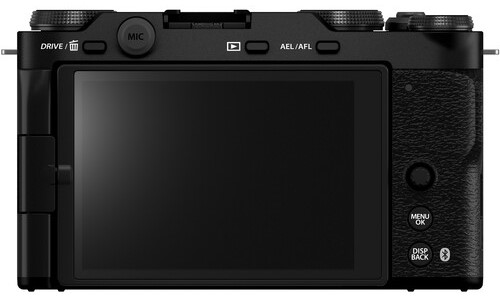
With a price in the midrange of Fujifilm’s mirrorless lineup, the Fujifilm X-M5 represents strong value for money. Its performance-to-size ratio is excellent, offering the same sensor as more expensive models in a smaller, travel-friendly body. For hybrid shooters who balance stills and video, it strikes a compelling sweet spot.

If you’re looking to save even more, buying used through MPB is an excellent option. MPB is one of the most trusted online platforms for photographers to buy, sell, and trade used gear. Every item is carefully inspected and graded for condition, most purchases include a six-month warranty, and there’s a seven-day return policy for added peace of mind. It’s a smart way to pick up the X-M5—or trade in your old camera—without sacrificing reliability or protection.
The X-M5 is ideally suited for travel photographers, vloggers, content creators, and enthusiasts ready to move up from a smartphone or compact camera. It may not replace the flagship X-T5 or X-H2, but for many, it delivers all the performance they need in a more approachable, portable package.
Ultimately, the Fujifilm X-M5 embodies the best of the Fujifilm philosophy—creativity, craftsmanship, and color—without excess bulk or complexity.
Frequently Asked Questions
Does the Fujifilm X-M5 have image stabilization?
The Fujifilm X-M5 uses digital stabilization for video but does not include in-body image stabilization (IBIS) for still photography. However, many Fujifilm lenses feature optical stabilization to help counter camera shake.
Can the Fujifilm X-M5 shoot 4K or higher video?
Yes, the Fujifilm X-M5 records open-gate 6.2K video at up to 29.97 fps and 4K video at up to 60 fps. It also supports 10-bit 4:2:2 output via HDMI for advanced color grading workflows.
What is the battery life of the Fujifilm X-M5?
Battery performance is rated for about 440 still images in Economy mode or roughly 45 minutes of continuous 6K video recording. USB-C charging is supported for convenience during travel.
Is the Fujifilm X-M5 good for beginners?
Yes, its compact design, automatic modes, and intuitive controls make it beginner-friendly, while its advanced features and film simulations keep it engaging for experienced photographers.
Which lenses are compatible with the Fujifilm X-M5?
The Fujifilm X-M5 uses the X-mount system and is compatible with more than 35 Fujifilm XF and XC lenses. Third-party manufacturers also offer adapters for additional lens options.
Just so you know, some of the cool stuff we mention comes with affiliate links, meaning we earn a commission if you buy (no extra charge to you!). Plus, we occasionally feature sponsored content, but rest assured, we only shout out products we genuinely stand behind.

